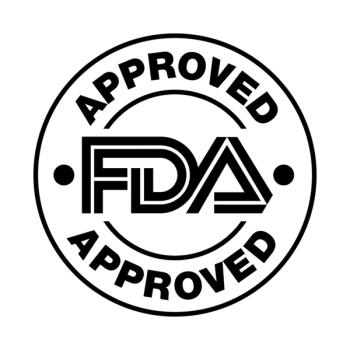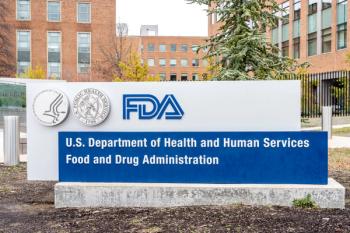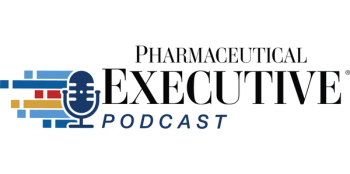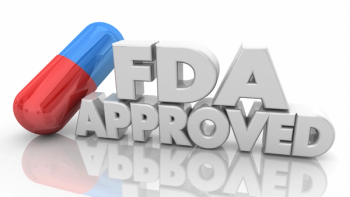
How Gilead “Blew Out the Lights” With Sovaldi
While flipping through my emails recently, I froze before an image that appeared on my screen. An old Rx colleague had sent me a graph, mapping out the 2014 U.S. sales achieved by Gilead’s Hep C drug, Sovaldi. It was stunning.
While flipping through my emails recently, I froze before an image that appeared on my screen. An old Rx colleague had sent me a graph, mapping out the 2014 U.S. sales achieved by Gilead’s Hep C drug, Sovaldi. It was stunning. Take a look:
Authored by ISI’s Mark Schoenenbaum, and presented
Intrigued, I also wondered how the Sovaldi’s first year might size up against the broader chronic category drugs. So, I pulled up the
So, here’s the news: Sovaldi is the new “king” of Rx “first year” sales. Period…And given its limited, “specialty” market, the result is even more impressive.
The Challenges Facing Sovaldi
However, all of this is quite amazing, especially given the formidable opposition forces that lined up against the product’s introduction.
For starters, there was the
And then there were the unprecedented attacks on Sovaldi by
And, finally, there are several Obamacare
So, collectively, you would think the net effect of these potent healthcare forces versus a modestly sized firm like Gilead (It doesn’t even crack the
Well, that’s not what happened. In fact, through this entire year Gilead did not waver on its $84,000 (U.S.) price tag for Sovaldi. And, just to make sure everyone got the point,
The Keys to Gilead’s Success
So, given all that was in front of it, it’s worth asking, how did Gilead pulled this off? Here’s my theory:
1. The “Cure” Story
Somehow, someway tens of thousands of Hep C patients, whether covered by public or private insurance programs, or using private loans, or whatever, found a way to access Sovaldi. And why did this near frenzy occur? Because Sovaldi cures people who have been sick with Hep C for years! And realizing this, Hep C patients all over America are doing whatever they must to obtain this Rx.
And here’s the result so far: 117,000
These sales, especially the Q1 results (see Schoenenbaum’s graph), were a very important moment for Gilead. Those early sales results quickly established the “cure” story in the domestic healthcare mainstream, allowing Gilead to proceed with the rest of their Sovaldi plan.
At the same time, Gilead was obviously looking much further ahead. Today, there are an estimated 3.2 million Hep C patients i
2. “Cost Effectiveness”
Additionally, Gilead walked right into the middle of an unbelievably favorable, very smart, very trendy American “cost effectiveness” argument that goes like this:
Hep C patients are chronic, high cost consumers of medical care. Their disease tracks on a perpetual downward slope, and even with proper ‘pre-Solvaldi’ Rx care, little improvement can be anticipated.
As their disease progresses, these patients reach a point where a liver transplant is necessary. This is because the Hep C virus eventually destroys the liver. A
Therefore, application of a full 12 week therapy of Sovaldi, at $84,000 per patient, is a very cost efficient solution. Once the therapy is concluded, chances are the spending for the treatment of that Hep C patient is essentially over.
In sum, using Sovaldi is a logical medico/economic solution for patients with Hep C.
This “cost effectiveness” story has led many public and private payers to grit their teeth and approve the use of Sovaldi for their Hep C patients – even though the product’s fiscal impact has the potential to wreck their short term Rx budgets.
3. Smart Business Decisions
Once the “cure/cost effectiveness” stories were publicly established, how did Gilead utilize this potent information? Surprisingly, and interestingly, the firm appears to have decided to do nothing with it. Apparently, once these facts were firmly settled within the Hep C community, the Gilead essentially saw no gain in publicly arguing this point, and chose to go silent in the U.S. on Sovaldi’s pricing issues.
However, in foreign markets, Gilead rapidly moved ahead to address concerns over the pricing of Sovaldi. Today, Gilead has a series agreements in place that range from $300 for a full course of Sovaldi under an authorized generic agreement in “low income” countries like
So with foreign pricing issues “neutralized”, and the economic/medical bona fides of the product firmly established in the U.S., Gilead was free to charge what the domestic market would bear. And so far, that unfettered pricing has worked out unbelievably well.
4. Management Conviction Decision and Crisp Coordination between Gilead Operating Units
I think another key to Sovaldi’s 2014 success was the courage of conviction that Gilead’s management demonstrated in the face of the early pressure they received from some of the most intimidating healthcare forces in the nation (see above). Especially in Q1, and likely in Q2, holding to Sovaldi’s pricing just could not have been easy. But they did it.
Additionally, Gilead’s management apparently was able to maintain close, critical coordination between all of their international & domestic Sales, Marketing, and Public Affairs operations during this period of enormous challenge and public scrutiny. It’s rare that such unified corporate effort actually works, but it clearly did in this case.
And finally, let’s talk about Gilead’s corporate “luck” in all of this. Just as the outrage over Sovaldi pricing seemed to be fading, Gilead management quietly moved forward and announced the introduction of Sovaldi’s “follow on” product - Harvoni. And let’s be clear. This Rx is not a “me too”. Amazingly, Harvoni is an even more effective drug than Sovaldi, and, so, was priced at an even higher price of $95,000 per therapy.
Right. Marketers can only dream about this scenario, much less have the luck to actually make this type of thing happen in the middle of an originator drug’s cycle.
New Marketing Approach?
It’s worth asking, is this remarkable, record setting performance by Gilead based on some new approach to Rx drug pricing & marketing?
Probably not. It’s even possible that several of the elements that came together…The incredible “cure” news on the product…A patient population that seems able to find a way to pay for the product, no matter what…and the amazing “cost effectiveness” arguments…could theoretically happen again for some future Rx.
On the other hand, I do think Gilead showed us some very innovative thinking.
Specifically, once satisfied that the Hep C community knew about the product, the apparent determination by management to go “silent” on the domestic pricing issue, while rapidly tamping down foreign concerns over the pricing of the product with dramatic discounts was both gutsy and new.
And, in fact, you might also argue that these two actions, in combination with the other above factors, may well have enabled Gilead to keep its very powerful domestic opponents at bay…in both the public and private sector…while giving the company a clear path to sell the heck out of Sovaldi in the U.S.
So, as we close out 2014, no matter how you slice and dice this story, I think you would have to agree that the Rx industry has witnessed something quite special this year. It’s very likely that Gilead’s amazing first year sales record with this product will stand for years. And that, Gilead, indeed, “blew out the lights” with Sovaldi.
Newsletter
Lead with insight with the Pharmaceutical Executive newsletter, featuring strategic analysis, leadership trends, and market intelligence for biopharma decision-makers.





